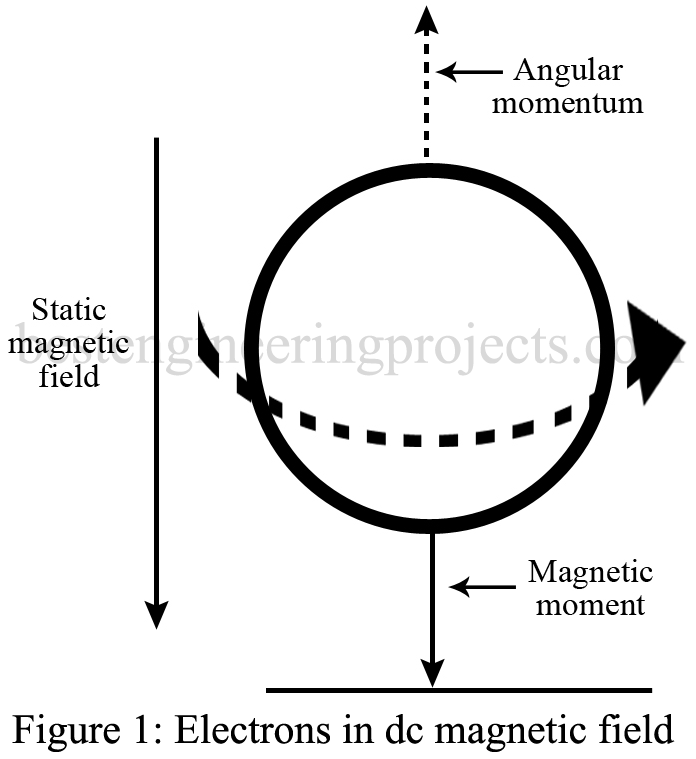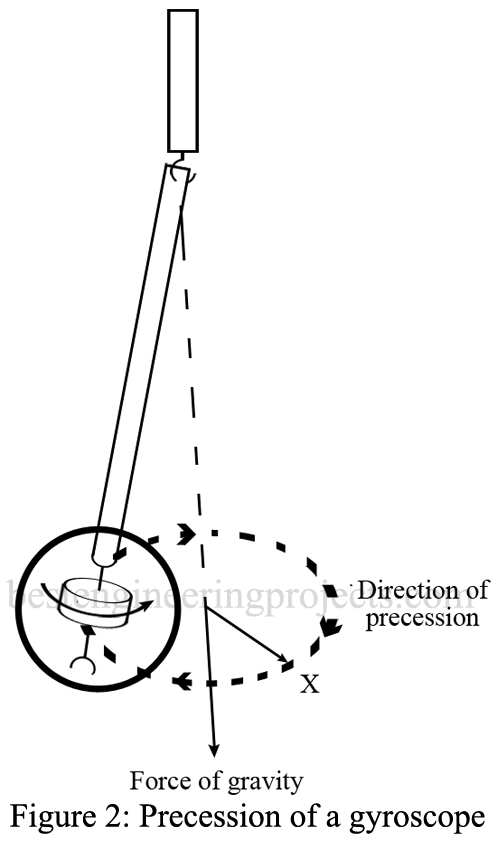In this article we will discuss about Ferrites, Fundamental Theory of Ferrites and Gyroscopic Action.
Introduction of Ferrites
Ferrites are compounds of iron, zinc, manganese, magnesium, cobalt, aluminum, and nickel oxides. They are manufactured by pressing into shape the required mixture of the finely divided metallic oxide powders and then firing the shaped mixture at about 2000°F. The product is a ceramic with high electrical resistance. Ferrites behave as iron alloys at low frequencies, but at high frequencies their high electrical resistance prevents eddy currents, and resonance takes place within the iron atoms themselves.
These unusual effects make it possible to use ferrites for special applications in microwave circuits. The most popular ferrite compounds are manganese (MnFe2O3), zinc (ZnFe2O3), and yttrium-iron-garnet [YZFe2(FO4)3], which is called yig. Ferrites are dielectrics, so they support and propagate the electromagnetic energy of microwave signals. When they are placed in waveguides or coaxial circuits they can be transparent, reflective, or absorptive, depending on their magnetic characteristics.
Fundamental Theory of Ferrites
A fundamental property of atoms is that both electrons and protons spin on their own axes. In addition, of course, the electron revolves around the nucleus. An analogy is the solar system, where the earth rotates on its axis as it revolves around the sun. As the electron spins, it creates a magnetic moment, or field, along its spin axis. This spinning charge appears as a current flowing around a loop. The atoms having more electrons spinning in one direction than another act as small magnets. The mutual action of all these atoms explains the magnetic properties of magnetic materials.
If a spinning electron is placed in a static magnetic field, the electron’s magnetic moment becomes aligned with the static field. The magnetic moment and its alignment with a dc magnetic field are shown in Fig. 1.
Gyroscopic Action
Electrons, because of their spinning motion, behave like very small gyroscopes. When a force is applied to the spin axis of an electron that would cause it to tilt, the electron will behave like any other gyroscope. It will precess, or wobble. Precession is defined as a movement of the axis of rotation at right angles to its original axis. Figure 2 shows a gyroscope mounted to a stick so that the stick can pivot freely. Even with the gyroscope spinning, the stick will hang straight down, due to gravity. However, if you try to move the stick from side to side, the gyroscope will force the stick to move around in a circle, or precess.
The direction is determined by the direction of rotation of the gyro rotor, and the frequency is determined by the gravitational force and the momentum of the gyroscope This is shown in Fig. 2. The natural precession frequency could be increased by increasing the force of gravity. A rotational force applied to the stick at the natural precession frequency will displace it from the vertical by a large amount. (The precession path shown in Fig. 16-18 would have a greater diameter.) A rotational force applied at any other frequency will produce a much lower displacement. This is similar to the feedback in an oscillator. With feedback at the right frequency, the amplitude of oscillation is much larger than when the feedback is off frequency.
Electrons behave much like gyroscopes, but gravity has little effect on them. Instead, a steady magnetic field is applied to line up the axes of the spinning electrons. This field causes any precession to die out quickly. Now when an alternating field is applied at right angles to the dc field, the electrons precess, or wobble, just the way the gyroscope and stick did when a sideways force was applied.
The natural precession frequency of the electrons in a ferrite is dependent on the dc magnetic field strength and the type of ferrite material. If an ac field is applied at the natural frequency, the precessional motion builds up. This increases the frictional damping effects because the entire atom is vibrating and the ferrite dissipates as heat the energy extracted from the ac field. The range of natural precession frequencies available with presently used ferrites is from about 30 up to over 200 GHz.


I am not sure how you find your next topics but I really appreciate the topics you have chosen here recently.
Thanks
Thankyou Tony Mayoral, we will keep posting related topic.